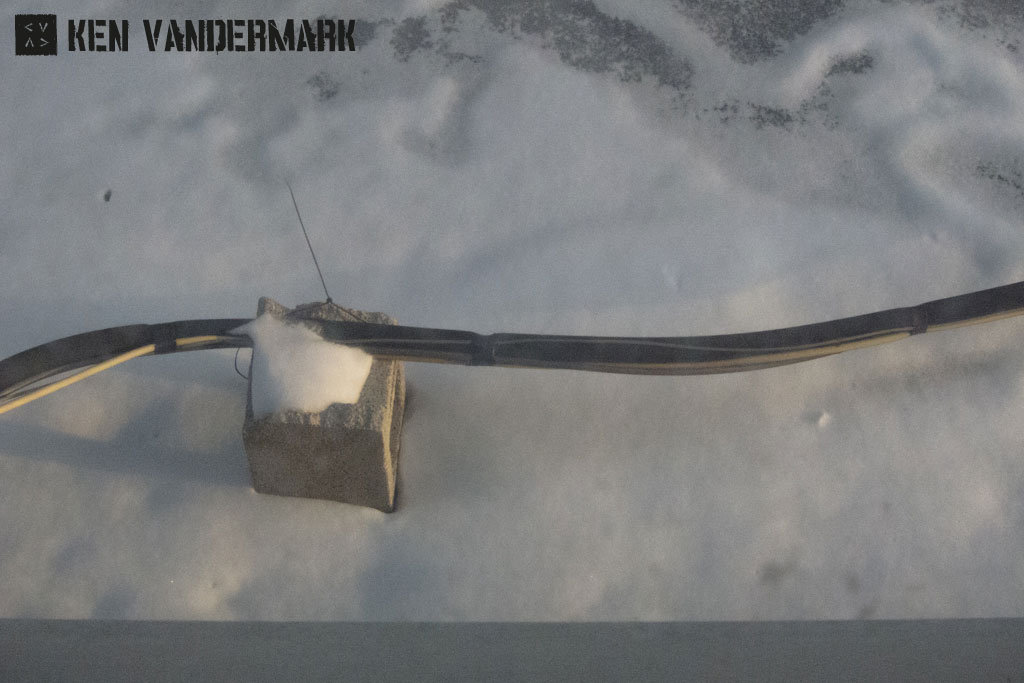

As with the rest of the tour, Ab had things planned perfectly for its conclusion. Nineteen concerts, then a recording session both live and “studio” at the Bimhuis in Amsterdam on the evening of the 21st and afternoon of the 22nd. What began as a staggering range of material had become a clear set of aesthetics that allowed the quartet project to develop into a truly original collaboration. By the time we played at the Bimhuis the book of twelve pieces was more than just thoroughly understood by the group; we had become completely free to spontaneously move anywhere within the material that made sense collectively or as an individual. And right up through the second day of recording the band was discussing refinements to the compositions and arrangements- this series of concerts never became less than a total work in process. In my estimation, Ab’s pieces developed in the following ways: “Von” (from a jazz sensibility to something that changed interpretation and arrangement on the spot, every night), “Munmyo” (from an adaptation of a traditional Korean piece featuring the clarinets to a set piece of the extreme aspects of the original placed against my solo solutions), “Then He Whirled About” (shifted arrangement several times but settled with a bass feature at the top and tenor duo at the bottom), “Straws: a portrait of Igor” (in many ways one of the most difficult pieces of Ab’s for me to play, trying to make the tenor saxophone sound appropriate on a homage to Stravinsky was very hard, but Ab’s combination of instruments and the voicings he used on the material made it possible for me to find solutions), “Return” (this remained a tour de force for Ab’s tenor playing at each performance, always on the edge intensity and fragility), “A Portrait Of Honest John” (another piece that went through radical shifts in arrangement and interpretation, again Ab’s voicings were spectacular- I don’t think that two tenor saxophones have ever created that much interval tension), “Goofy June-Bug Forgotten Poet Morning Stomp” (this became almost some kind of post-Archie Shepp soul tune, a blast for me to solo on), “untitled” (another extreme piece among extremes, and again Ab used such simple and straightforward materials to create a staggering amount of tension; relatively quiet clarinet tones rising against arco bass, no drums, resolving somehow into a re-worked phrase of Monteverdi- impossible and perfect).
Going into the project, I had a general plan on my material in terms of the basic arrangements. These structures changed in certain cases, but the difference between what Ab created on a single page (usually providing the phrases for all the instruments in parallel), which would then imply some possible directions for the music, and my sense of “road maps” for the improvisations was significant. Ab seemed to like my conception regarding a “complete vision” for the improvisational nature of a composition, whereas I was bowled over by the implications in all the details (voicings, dynamics, instrumental registers, etc.) he provided with his material. In many cases, much of the thinking in Ab’s music seemed to be inspired from ideas about counterpoint that he developed when studying with Misha Mengelberg, both for compositions and improvisation. Because of my lack of harmonic sensibility, I tend to work with sonic “images” that build my thinking about organization in almost in a cinematic way. This meant that on my pieces the structural flow remained pretty consistent after the first days of rehearsal in September, but what took place in the centers of improvisational activity would stretch in different directions on each night. One way to consider the general character of our methods is that Ab works through details towards expansion, and I organize events towards expansion; micro activity vs. macro activity. The key to either Ab’s or my approach is the creative attitude of the musicians playing the compositions, what they develop with the material on each occasion.
Briefly put, here are some aspects of the pieces I brought in. All were written while I was in New York during the “Musician” screenings: “Losing Ground” always featured Wilbert on bass, but sometimes Ab approached the trio section for clarinet and rhythm section like Giuffre, other nights like George Lewis, some nights pushing the horn to a disintegrating level. Wilbert would change his strategy to his solo over Martin’s brushwork every time we played the piece. “Rather Scattered” remained a burner, but it took time to organize the vamp content with Ab’s tenor solo on the second half of the tune. “Waltz Four Monk” was a somewhat straightforward Jazz piece on the surface, with tenor (Ab) and clarinet (me) soloing over a swinging rhythm section, but it would move in and out of 3/4 and 4/4 time at will. Of all of my compositions, “Memory Moves Forward,” ended up being most similar to Ab’s, and my original idea for the structure for the improvisations was abandoned. It took nearly half the tour to solve the problem of how to organize the piece so that it worked. In fact, I nearly decided to abandon the piece in Wels, but Ab convinced me to keep working on it and I’m very happy we did- the results were something severe and austere, Ab’s use of the shakuhachi on it was beautiful.
The last gig at the Bimhuis went very well, a good crowd and good music. Pieces that didn’t work at top level at the concert were played beautifully the next afternoon. Our problem now is that we have a dozen master takes, too much for an album, so what will we have to drop? I know that it’s going to be a hard process to make the final selection. Maybe there’s a way to release all of the music in two sets, as they were played in concert on the twenty gigs in September and October…
© 2024 Ken Vandermark – musician & composer | Disclaimer